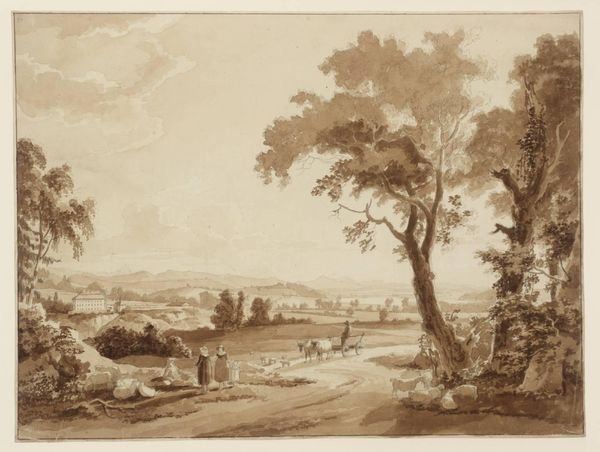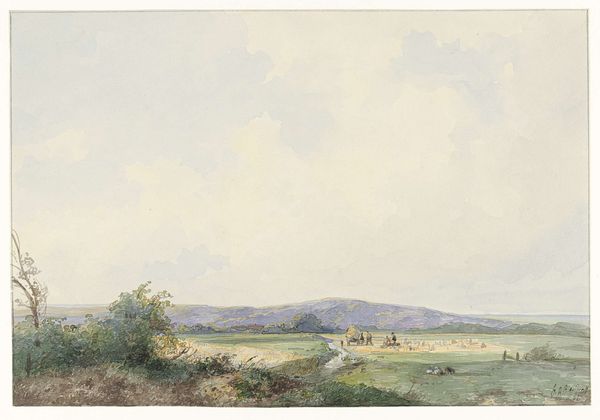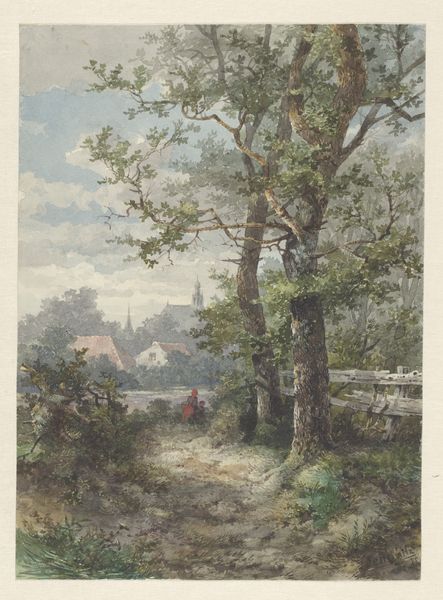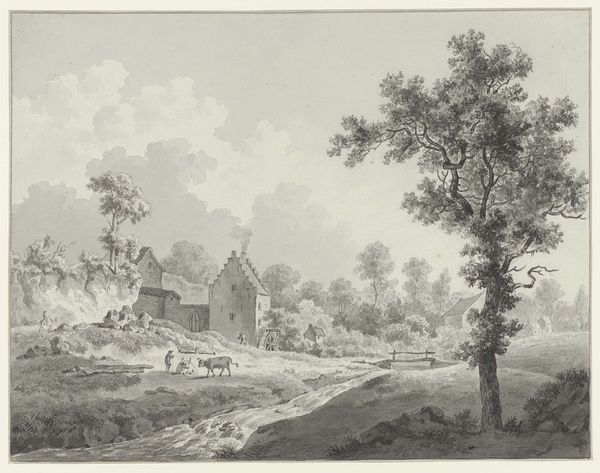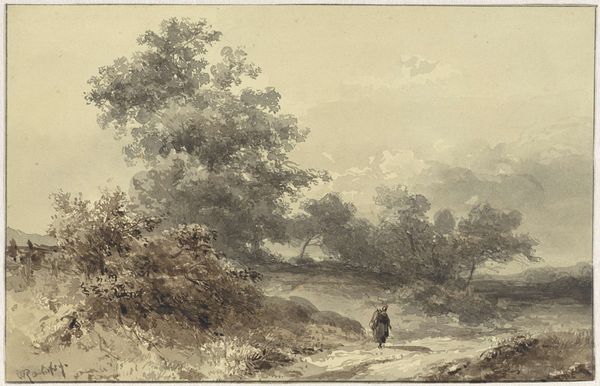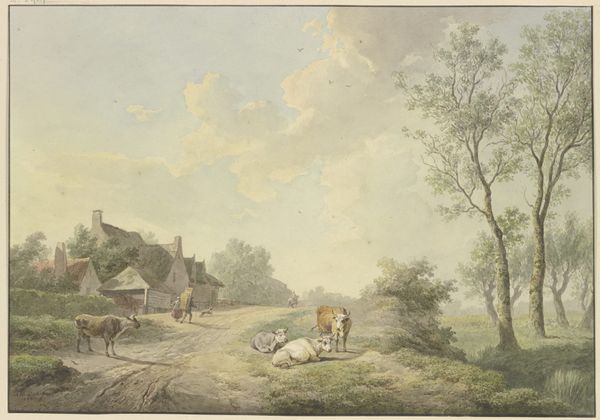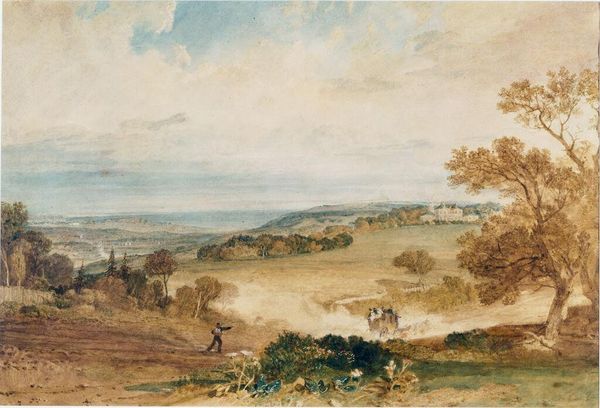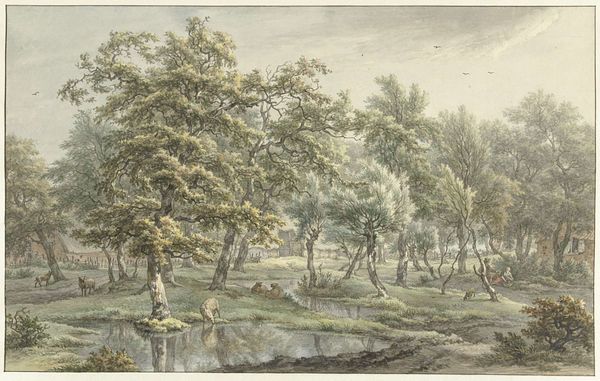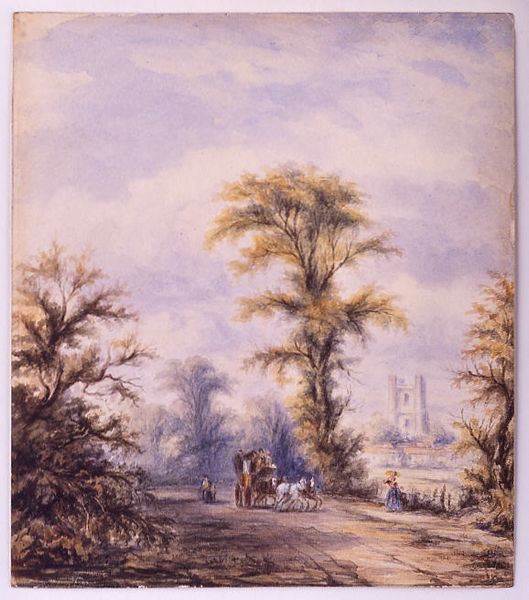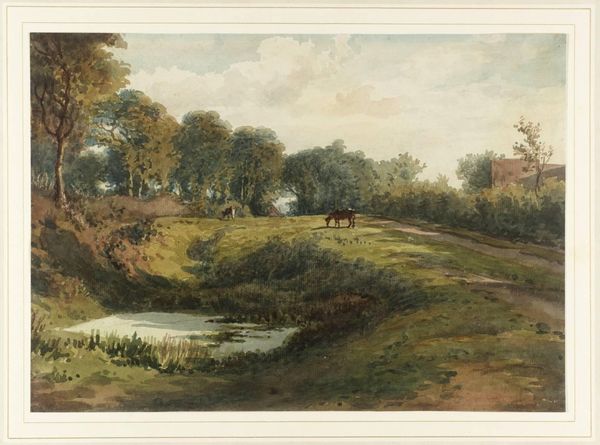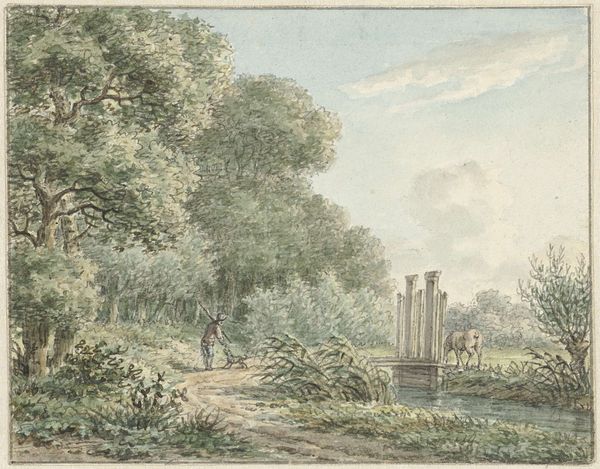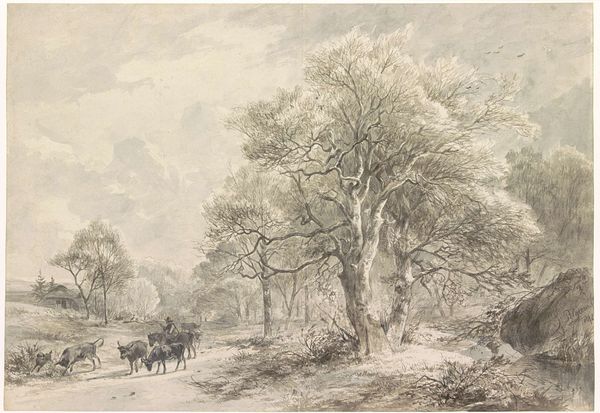
plein-air, watercolor
#
plein-air
#
landscape
#
nature
#
watercolor
#
romanticism
#
genre-painting
#
botanical art
#
watercolor
#
realism
Dimensions: height 193 mm, width 274 mm
Copyright: Rijks Museum: Open Domain
Curator: Here we have Willem Roelofs' "Landschap met boerderij en vee," or "Landscape with Farm and Cattle," rendered in watercolor in 1849. Editor: It feels airy, almost washed out, which is interesting given the subject matter. The soft focus seems to blur the line between the pastoral ideal and…something less picturesque, maybe the labor beneath. Curator: It's fascinating you pick up on that tension. Roelofs, despite his focus on the landscape itself, presents labor through the materials, namely the paper and watercolor. This wasn't just art, it was plein-air practice; using accessible materials in situ. Editor: And watercolors were inherently portable, perfect for those seeking an “authentic” experience of nature without the cumbersome studio setup. But this speaks to the rising accessibility of art making—less precious, more immediate. I wonder what his watercolor was made from; I'd also want to know about the paper, and its sourcing. Curator: The romantic sensibility peeks through, doesn’t it? The haze softens any harsh realities; yet, simultaneously, it speaks to his dedication to paint from life. You can feel him grappling with the vastness of nature, trying to capture its ephemeral beauty. There is a feeling of fleeting wonder that can not last. Editor: I appreciate his attempt to democratize the art-making process by using relatively inexpensive materials. It underscores the notion that anyone can engage with and depict their environment, regardless of resources. This is landscape painting as something that could be made in factories, just like those windmills on the horizon! Curator: Well, he succeeds wonderfully in evoking that particular quality of Dutch light! One might walk by without considering that it might just be an exercise that invites you to enter it; with it being simple as the land itself, however, also revealing much of the culture. Editor: I like how Roelofs shows the possibility that the humblest, most available things can create a lasting image, connecting to culture, location, and time. A nice subversion of the high/low art distinction.
Comments
No comments
Be the first to comment and join the conversation on the ultimate creative platform.


